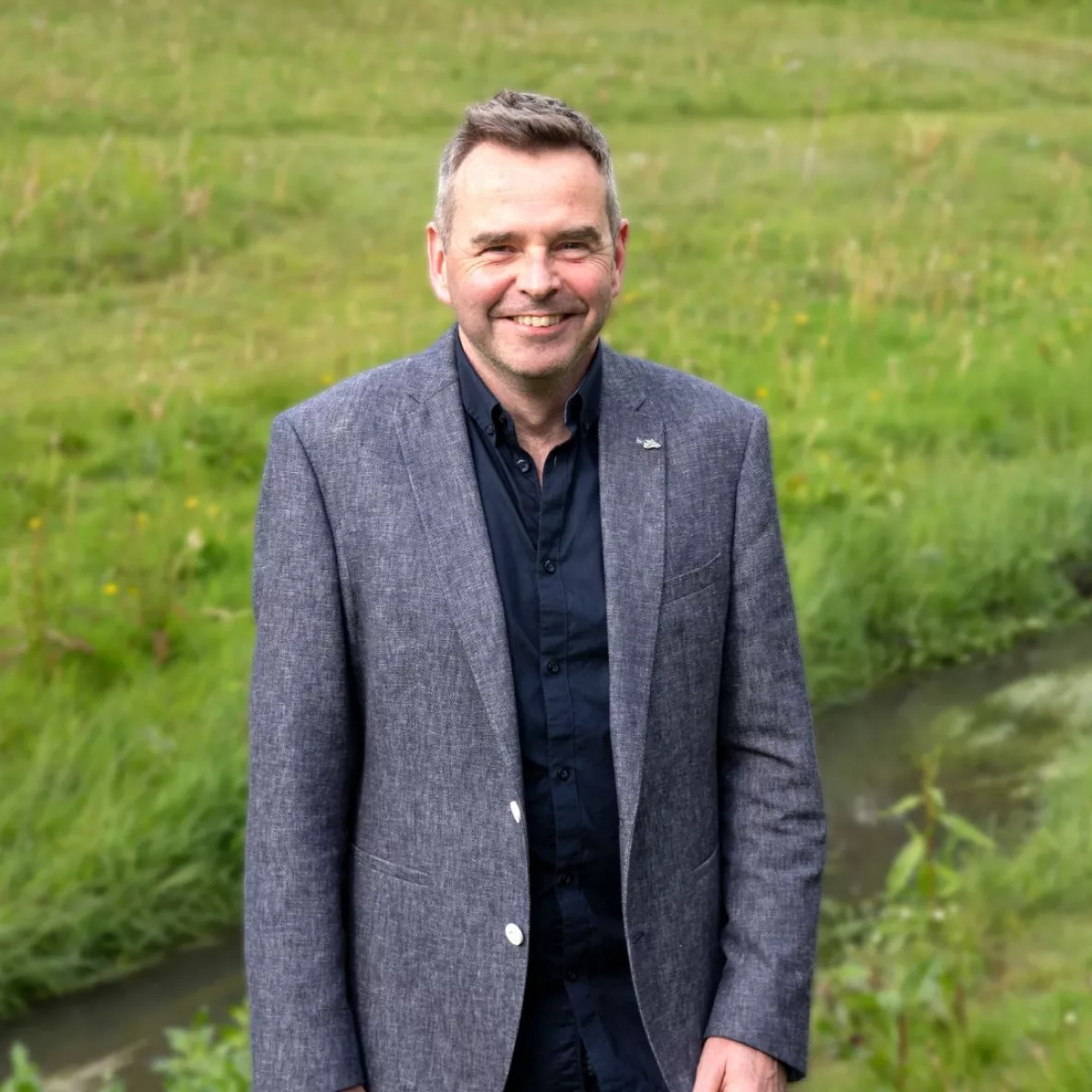
When Dr Ronan Courtney was growing up in Co Meath, his playground consisted of the local woods, rivers and fields. “Being immersed in and observing nature fascinated me,” he says.
This fascination followed Courtney as he later obtained a degree in environmental science. Degree in hand, Courtney started working in environmental consultancy in mine waste management at the Tara Mines facility. It was here that he was exposed to the scale of the mining industry and the sustainability challenges it faced, while also seeing the potential for applying natural systems and processes.
This experience inspired Courtney to undertake a PhD in using ecological approaches for sustainable management of mine wastes, an area of research that he still pursues to this day at the Bernal Institute and the University of Limerick.
His research, which has seen funding from Enterprise Ireland, the Irish Research Council, Science Foundation Ireland and the Environmental Protection Agency, has made waves in the waste management space, informing global practice in the alumina industry, influencing national regulations and even informing EU publications on best practices.
Mine waste management
According to Courtney, his research can be broken down into two categories. He labels the first category as the “management of solid mine wastes”, where mine waste is converted to a soil medium that supports plant growth and ecological function.
“Our demonstration sites show that this methodology is sustainable through validation in ecological function and biodiversity, such as the establishment of key faunal groups such as earthworms, soil microbial communities and a wider pedogenesis (soil development).”
The second category is referred to as the “management of mine-impacted wastewaters using the application of passive systems”, specifically constructed wetlands.
“We identify natural, novel processes and optimise using candidate macrophytes and enhanced soil conditions to effectively treat mine wastewater,” he says of the second category.
“Our research is a long-term solution to mitigate leaching risk [a process where harmful substances may enter the environment through dissolution] to the aquatic environment (aquafers, lakes, rivers, estuaries and habitats).”
Natural methods
Courtney’s work focuses on ecologically engineered solutions, but how does this differ from conventional waste management practices?
Courtney explains that as water from mine sites can be contaminated by large concentrations of metals, or can be highly acidic or alkaline, they “must be treated before they can be discharged to the environment”.
“Conventional treatment of mine waters can be energy and chemically intensive for effective removal of metals and/or pH adjustment,” he explains. “As the generation of contaminated waters is projected to continue over multi-generational timeframes, this presents a significant long-term cost to industry or stakeholders responsible for site management.
“Application of ecological principles (passive treatment) uses natural systems that are optimised for effective treatment. As natural systems, they do not require energy or other inputs and, through self-regulation, can operate effectively over longer timeframes.”
He says that this approach can be applied to other industries to manage their specific wastewaters. However, when it comes to the wetlands approach, Courtney says the adoption of the process outside of the mining industry has been “challenging”, due to a desired assurance of long-term performance.
“This solution is also compounded by its area requirement to accommodate constructed wetland systems, which would not have been considered in the footprint of most manufacturing sites.”
Branching out
According to Courtney, he and his team have translated their lab-based findings to “field-scale operations” at sites in Ireland, Europe, Australia, the UAE and Brazil.
“Many of these research demonstration sites have been operational for over a decade, leading to substantial scientific basis for our validated outcomes that this solution is viable,” he says.
“These research solutions have been demonstrated in the field, on both live and legacy industrial sites, building upon results from laboratory and deployment in a live setting.”
These international applications have been aided by the links Courtney and his team have made with a range of industrial partners and members of the International Aluminium Institute (IAI).
“The industrial projects to date have been validated by the IAI to ensure that the research outcomes are translatable across sites worldwide, and truly drive a sustainable regulated industry.”
But while Courtney’s research has demonstrated effectiveness, he says it can be difficult for industry to accept due to its “novelty and simplicity and the fact that is not core to traditional mining skillsets and requirements”.
Mining perceptions
When it comes to mining, Courtney describes the perception of this industry as “complex”.
“It is often viewed as everyone else’s problem, no community wants to own it, but rather pass it on to a distant mining industry.
“However, mining is critical for societal demand and consumption. Whether it’s our mobile phone, car or agricultural machinery, these all are dependent on mining. Supply of metals from mining is critical for economic and societal growth, in short – if it didn’t grow, it was mined.”
He says that mining is often perceived through the lens of abandoned mine sites, without consideration for the “strict environmental regulations” under which modern mining facilities operate.
“Industry is very aware of sustainability challenges and is actively engaged in supporting and collaborating on pioneering research to address these challenges,” he says. “All current and future operating mining facilities within the EU are obliged to develop and demonstrate a technology that it will employ upon ultimate closure, to ensure that the facility closure is safe does not pose a pollution risk.”
As for the future of his research, Courtney looks toward wastewater contaminants and their application in sustainability.
“Historically, many contaminants in wastewaters were viewed as pollutants that needed removal,” he says. “Today, and in the future, these contaminants can often be seen as raw materials with economic value.
“Removal and recovery of the materials can address the sustainability challenges within the minerals industry.”